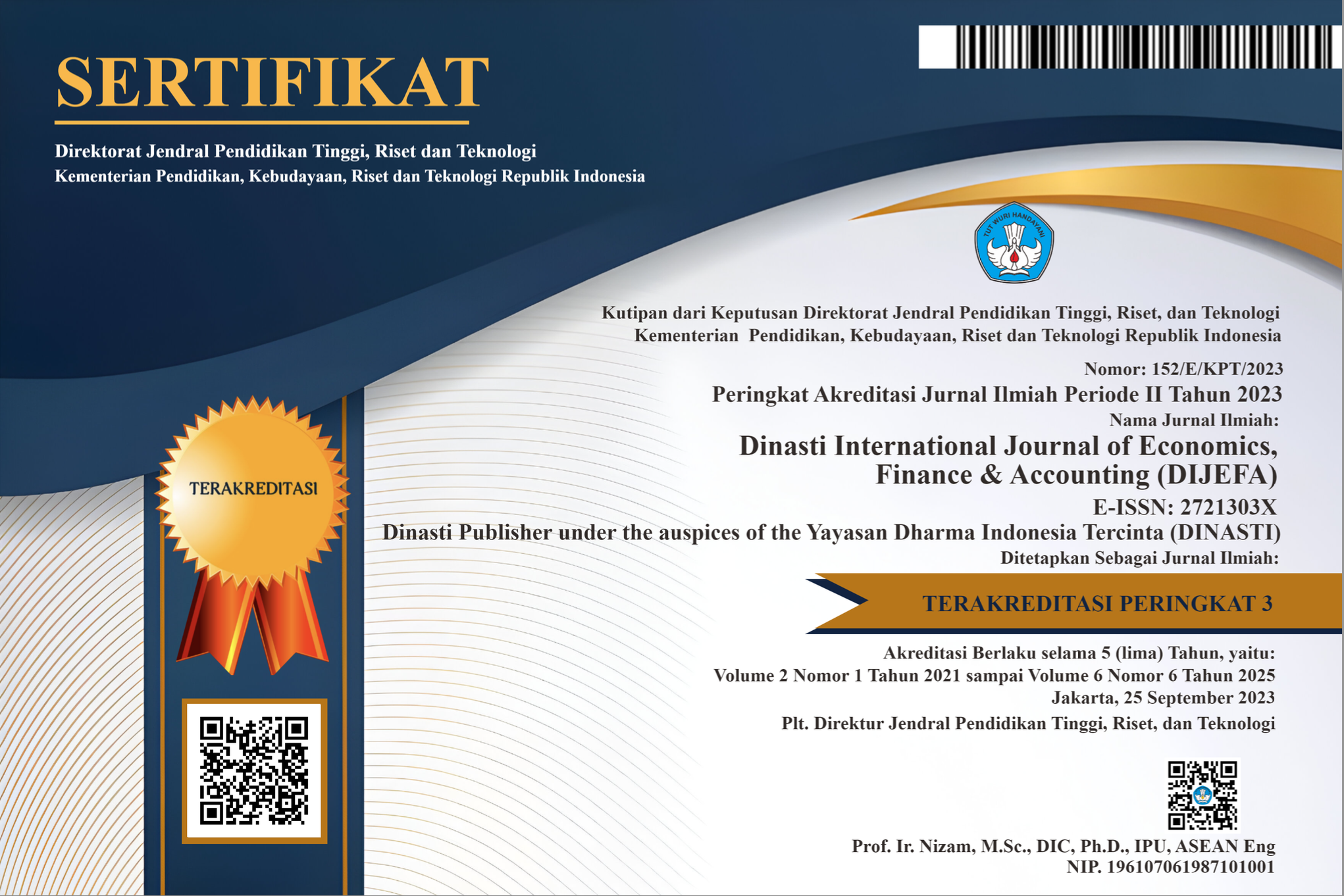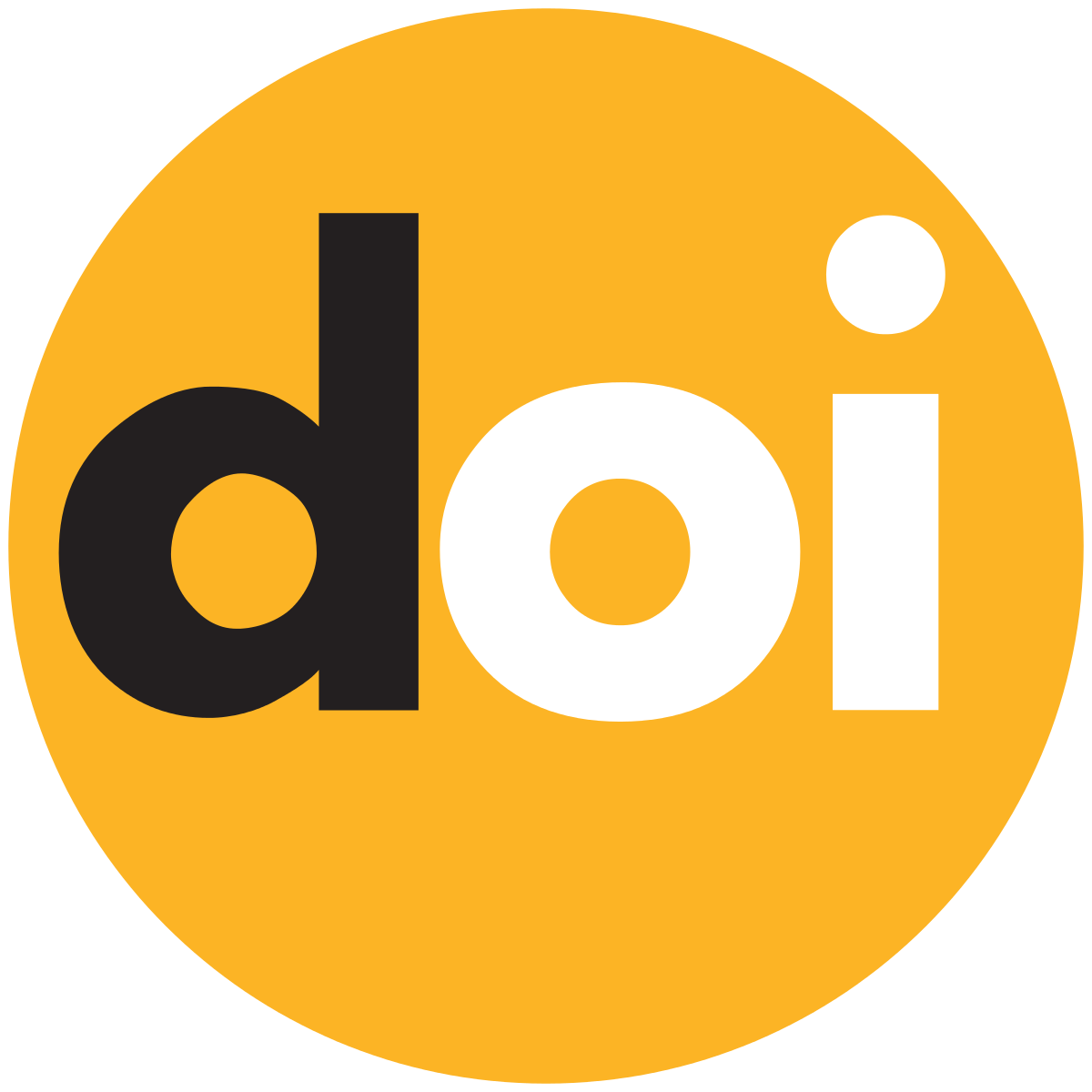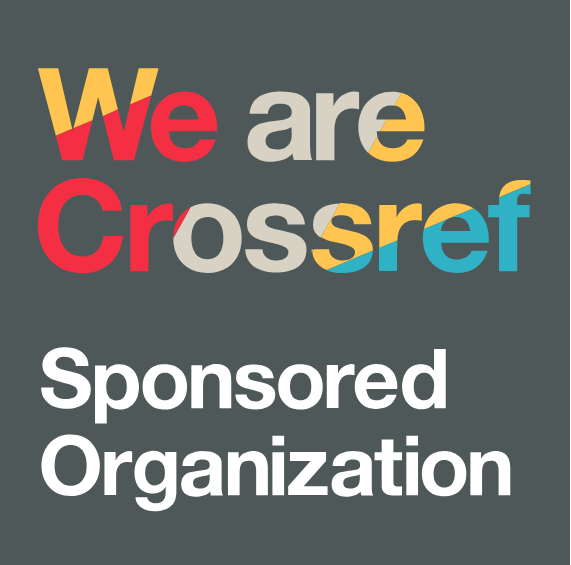Utilization of or Codes In Monitoring And Increasing The Effectiveness of Cocoa Farming Results In Sajau Village, Bulungan Regency
DOI:
https://doi.org/10.38035/dijefa.v6i1.4021Keywords:
QR Code, monitoring, efficiency, agricultural results, cocoaAbstract
This paper discusses the use of QR Code technology in monitoring and improving the efficiency of cocoa farming in Sajau Village, Bulungan Regency. The problem identified is the absence of an adequate monitoring system to manage cocoa farming in real-time. The research methodology used in this study is a descriptive method with a qualitative and quantitative approach to analyze data obtained from the field. using QR Code to track cocoa production and distribution data, which provides accurate information at high speed. The results of the study indicate that the application of QR Code can improve efficiency and transparency in the management of cocoa farming. In conclusion, QR Code is an effective solution to improve the management of cocoa farming in Sajau Village.
References
I. Sulaiman, . Y., and W. Muliawan, “Building Cocoa Traceability System Based on Web Application and QR Code,” J. Apl. Teknol. Pangan, vol. 10, no. 2, pp. 53–59, 2021, doi: 10.17728/jatp.7549.
Erico Pebriandi ST MSi, “QR Code Upaya Pengembangan Sistem Perbenihan Tanaman Berbasis Digitalisasi,” DINAS PERTANIAN. Accessed: Sep. 13, 2024. [Online]. Available: https://distan.babelprov.go.id/content/qr-code-upaya-pengembangan-sistem-perbenihan-tanaman-berbasis-digitalisasi
B. Qr-code, W. W. Aji, and H. Supriyono, “Sistem Penampilan Informasi Koleksi Tanaman,” vol. 20, no. 01, pp. 7–12, 2020.
W. Elake, J. Riry, and R. B. Riry, “Pengelolaan Tanaman Kakao (Theobroma cacao) Oleh Petani Di Desa Makububui Kecamatan Taniwel Timur Kabupaten Seram Bagian Barat,” J. Jendela Pengetahan, vol. 17, no. 2, pp. 187–197, 2022, [Online]. Available: https://www.researchgate.net/profile/Mohammad-Lasaiba/publication/371983975_ANALISIS_KETERSEDIAAN_KARBON_KAWASAN_HUTAN_LINDUNG_GUNUNG_SIRIMAU_KOTA_AMBON/links/64a0feee8de7ed28ba6ae003/Analisis-Ketersediaan-Karbon-Kawasan-Hutan-Lindung-Gunung-Sirimau-Kota-
I. Setiawan, “Pemanfaatan Digital di Pertanian,” Kontan. Accessed: Sep. 13, 2024. [Online]. Available: https://www.cips-indonesia.org/post/opini-pemanfaatan-digital-di-pertanian?lang=id
C. Fathul Hadi, R. Mustika Yasi, and C. Agustin, “Aplikasi Teknologi QR Code Pada Identifikasi Tumbuhan Di Wisata De-Djawatan,” TEKIBA J. Teknol. dan Pengabdi. Masy., vol. 2, no. 1, pp. 7–12, 2022, doi: 10.36526/tekiba.v2i1.1583.
D. I. Septeri, “Development Strategy of Cocoa Agroindustry Based on Farmer Groups in Kapanewon Patuk Gunungkidul Regency Daerah Istimewa Yogyakarta,” J. Agroindustri, vol. 12, no. 1, pp. 61–71, 2022, doi: 10.31186/j.agroindustri.12.1.61-71.
A. Ardita, S. DWP, and D. Widjanarko, “Kinerja Penyuluh Pertanian Menurut Persepsi Petani: Studi Kasus di Kabupaten Landak,” J. Vocat. Career Educ., vol. 2, no. 1, pp. 1–8, 2017, doi: 10.15294/jvce.v2i1.10908.
R. Z. Munawaroh, A. Prastowo, and M. Nurjanah, “Efektivitas Penilaian Pembelajaran Menggunakan Google Form pada Pembelajaran Daring,” JISIP (Jurnal Ilmu Sos. dan Pendidikan), vol. 5, no. 3, 2021, doi: 10.36312/jisip.v5i3.2152.
S. Sopiandi and R. Suwartika, “Model Sistem Informasi Monitoring Pelanggaran Agen Call Center Berbasis Web Pada PT. Infomedia Nusantara,” Jutisi J. Ilm. Tek. Inform. dan Sist. Inf., vol. 11, no. 1, p. 11, 2022, doi: 10.35889/jutisi.v11i1.762.
J. Ariska and M. Jazman, “Sekolah Menggunakan Teknik Labelling Qr Code (Studi Kasus?: Man 2 Model Pekanbaru),” J. Rekayasa dan Sist. Inf., vol. 2, no. 2, pp. 127–136, 2016, [Online]. Available: http://ejournal.uin-suska.ac.id/index.php/RMSI/article/view/2619
Downloads
Published
How to Cite
Issue
Section
License
Copyright (c) 2025 Agnes Natalia Susanti, Rini Suwartika Kusumadiarti

This work is licensed under a Creative Commons Attribution 4.0 International License.
Authors who publish their manuscripts in this journal agree to the following conditions:
- The copyright on each article belongs to the author(s).
- The author acknowledges that the Dinasti International Journal of Economics, Finance & Accounting (DIJEFA) has the right to be the first to publish with a Creative Commons Attribution 4.0 International license (Attribution 4.0 International (CC BY 4.0).
- Authors can submit articles separately, arrange for the non-exclusive distribution of manuscripts that have been published in this journal into other versions (e.g., sent to the author's institutional repository, publication into books, etc.), by acknowledging that the manuscript has been published for the first time in the Dinasti International Journal of Economics, Finance & Accounting (DIJEFA).


























































